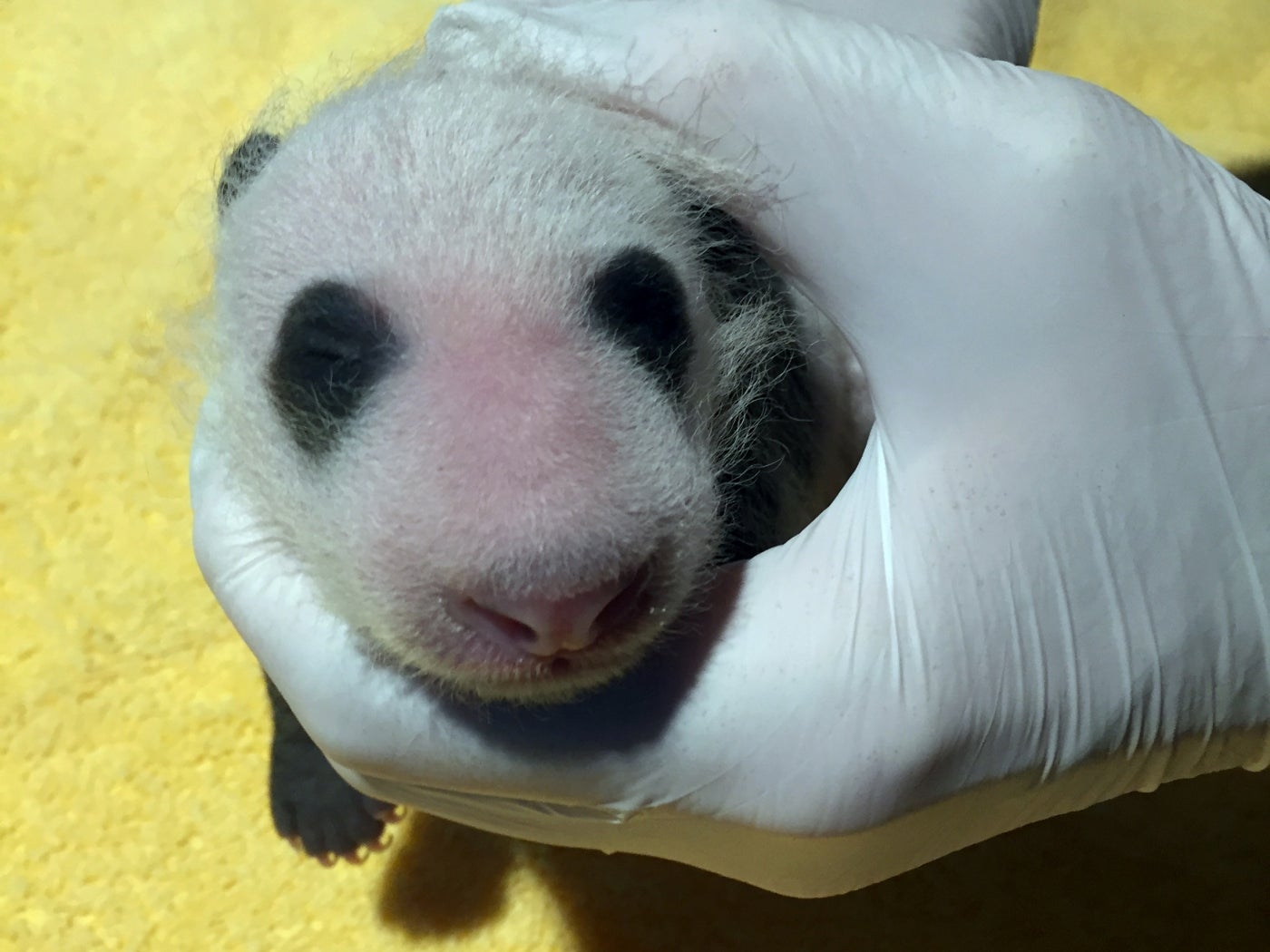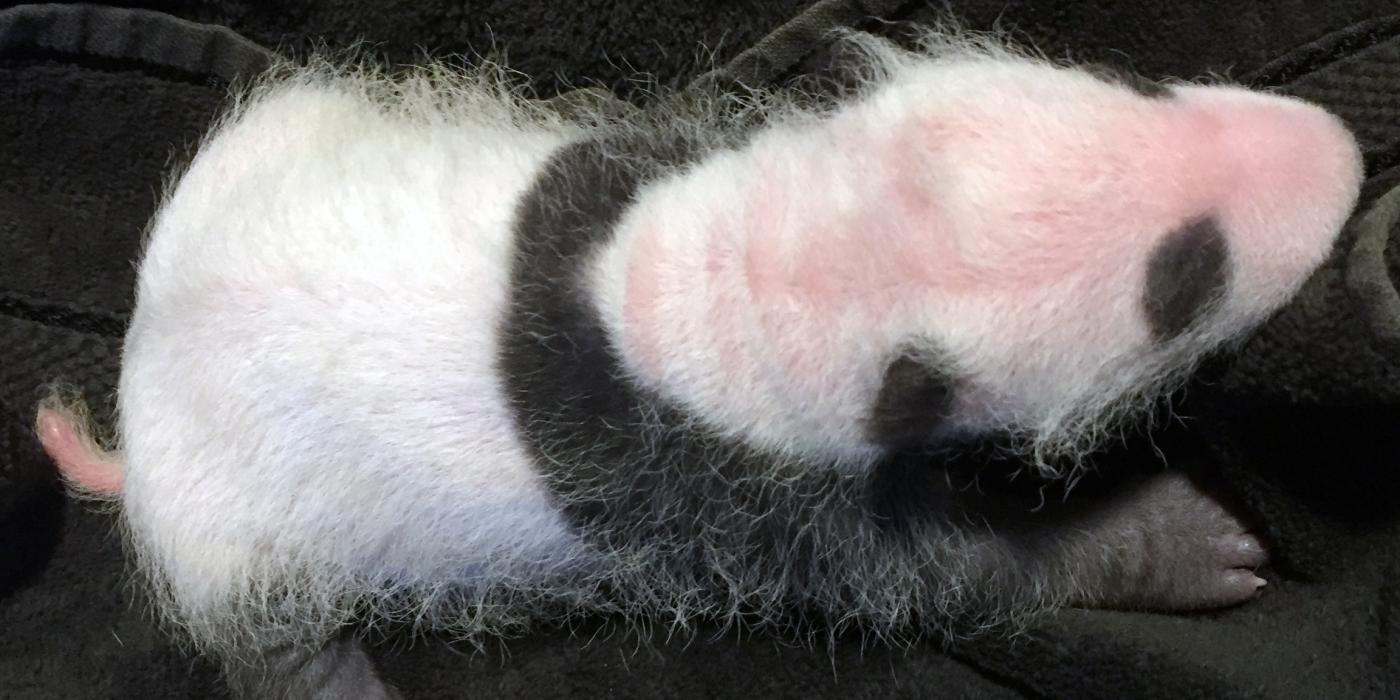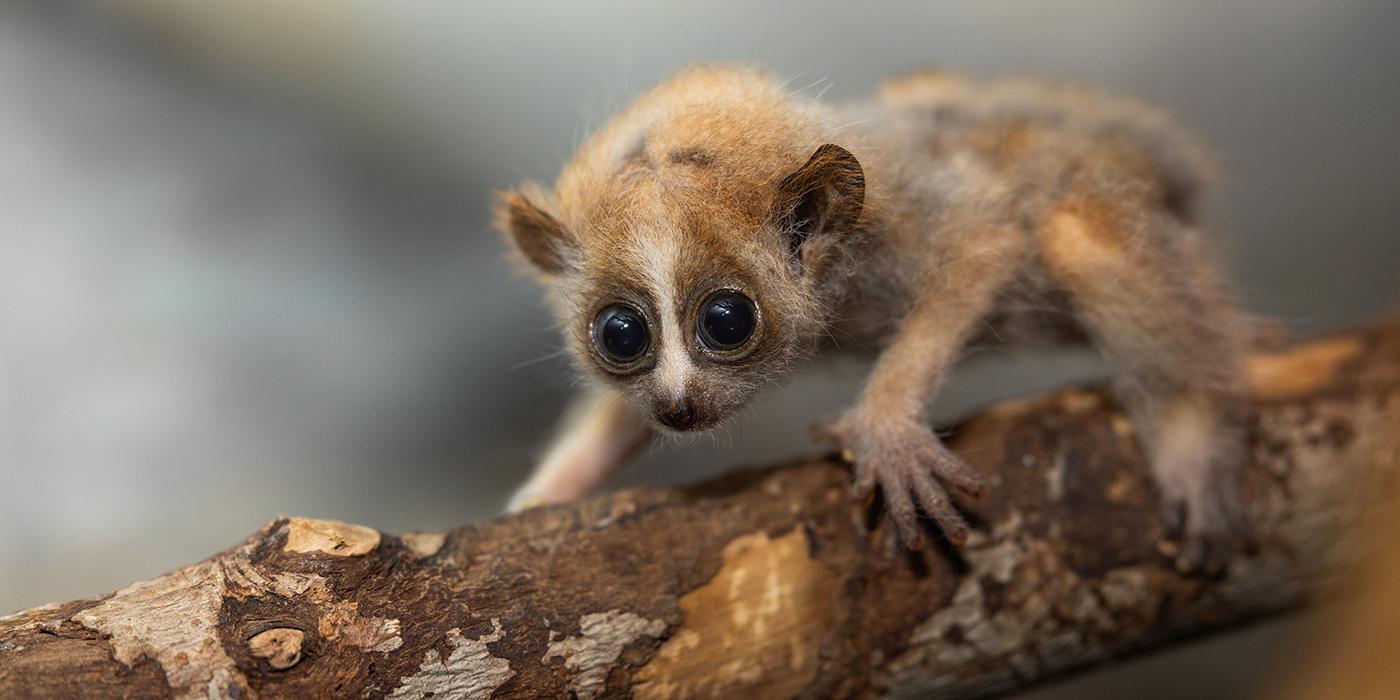#PandaStory: Cub Day 24
Exciting news! When giant panda Mei Xiang left the den yesterday to eat some bamboo, the panda team was able to retrieve her 3-week-old cub for its first neonatal exam.
During the quick checkup, keepers weighed the active and responsive newborn. It tips the scales at 634.8 grams—just under 1.5 pounds! We are encouraged to see that our young panda appears to be healthy and vibrant.
At a glance, the cub’s wispy fur is growing in nicely. Its bright, pink skin still shows in spots on its muzzle, the top of its head, upper back and tail. In another few weeks, its eyes and ear canals will begin to open.

This time around, Mei Xiang only left the den for a few moments, and the team did not want to upset her by handling the cub longer than necessary. When Mei Xiang routinely leaves the den for longer periods of time, opportunities to perform more thorough health checks will arise. During a typical cub exam, the panda team charts the cub’s growth by obtaining its weight and measurements. In the near future, the Zoo’s veterinary team will join us to perform a full medical exam on the cub.
We also hope to take a cheek swab soon, which will enable our Center for Conservation Genomics scientists to confirm the cub’s sex via DNA analysis. Outwardly, cubs appear similar at birth, so this is the most accurate way to determine whether we have a male or female.
Earlier today, Mei Xiang left the den twice to eat. The first time, she snacked on some leaf eater biscuits, one of her favorite treats. Later, she stepped out to eat some bamboo, then returned to the den to care for her cub.
Some Panda Cam viewers have noticed that Mei Xiang and her cub have had some rodent visitors occasionally running through the den. As the seasons change and the weather becomes colder, the Giant Panda building—a secure, dry area protected from the elements—becomes an attractive place for opportunistic pests to seek shelter. The food that our giant pandas eat also attracts rodents.
We have a team of pest management specialists who work with keepers to reduce and control our visiting rodent population throughout the Zoo. For the safety of the animals in our collection, we do not use pesticides or traps in the bears’ enclosures. Fortunately, Mei Xiang is a 200-pound bear with strong instincts to protect her cub. No rodent—however clever or cunning—poses a serious threat to either of them.
This story appears in the Sept. 14 issue of the Giant Panda Bulletin. Planning a visit to the Zoo? Please note that Asia Trail, including giant panda viewing, will be closed beginning today, Sept. 14, for repaving.
Related Species:



